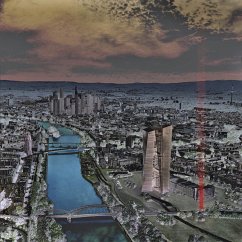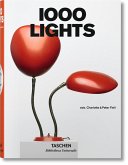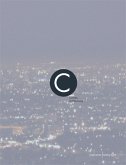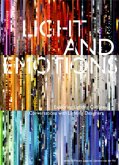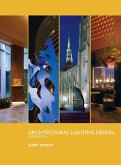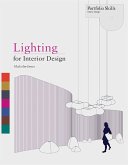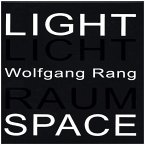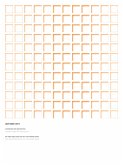The ongoing paradigm change in regard to the use of energy, its efficient usage and the consumption of resources is giving rise to new light systems and lighting appliances. This development might also lead to the use of light as a building material in its own right, comparable to traditional building materials, making it possible to create light space productions - something that did not seem feasible up to now due to the high cost of energy and of light systems.
The goal of this book is to develop temporary light spaces that re-interpret the existing urban environment on a seasonal basis or over a cycle of several years. As a result, the city will literally appear in a new light. Strollers in the city streets will experience their familiar environment in a new way. Illuminated planes interlacing with planes made by linear fields of light beams will create immaterial material space experiences: still lifes of light within which one can move about and light choreographies that move barely noticeably, creating still lifes in motion.
Current research aims at exploring, imagining and inventing stand-alone spatial structures of light, adding on to and transforming existing spaces, creating a new spatial awareness that may enable people to experience urban space in a different way. Similar to the process of architectural design, where haptic built volumes create interspaces, the light spaces that are currently being designed make these interspaces visible and allow urban dwellers to experience unexpected spatial constellations.
In addition to the presentation of light-planning
examples in Paris, Shanghai, Helsinki, Mekka and Frankfurt am Main the book includes a number of essays relating to the subject, among them: "Light architecture" (Werner Oechslin),
"The Potemkin city" (Adolf Loos), "Glass archi-tecture and letters about glass houses" (Paul Scheerbart), "Alpine architecture" (Bruno Taut), "The unvisible cities" (Italo Calvino), "Architecture must burn" (Coop Himmelb(l)au), "In search of light" (Wolfgang Rang), "City light. About the social power of light" (Helmut Bien), "Light or the loss of darkness" (Manuel Cuadra), "Visible and unvisible light" (Andreas Danler), "Light concepts for Frankfurt am Main" (Michael Hootz), "Light planning for cities in China" (Hao Luoxi), "City light. An instrument of urban planning" (Roger Narboni), "Light for the public space" (Susanne Seitinger), "Sustainable urban lighting" (Mark Burton-Page), "Borders, places, light" (Niels Gutschow), "Earth and spirit" (Wolfgang Rang).
Hinweis: Dieser Artikel kann nur an eine deutsche Lieferadresse ausgeliefert werden.
The goal of this book is to develop temporary light spaces that re-interpret the existing urban environment on a seasonal basis or over a cycle of several years. As a result, the city will literally appear in a new light. Strollers in the city streets will experience their familiar environment in a new way. Illuminated planes interlacing with planes made by linear fields of light beams will create immaterial material space experiences: still lifes of light within which one can move about and light choreographies that move barely noticeably, creating still lifes in motion.
Current research aims at exploring, imagining and inventing stand-alone spatial structures of light, adding on to and transforming existing spaces, creating a new spatial awareness that may enable people to experience urban space in a different way. Similar to the process of architectural design, where haptic built volumes create interspaces, the light spaces that are currently being designed make these interspaces visible and allow urban dwellers to experience unexpected spatial constellations.
In addition to the presentation of light-planning
examples in Paris, Shanghai, Helsinki, Mekka and Frankfurt am Main the book includes a number of essays relating to the subject, among them: "Light architecture" (Werner Oechslin),
"The Potemkin city" (Adolf Loos), "Glass archi-tecture and letters about glass houses" (Paul Scheerbart), "Alpine architecture" (Bruno Taut), "The unvisible cities" (Italo Calvino), "Architecture must burn" (Coop Himmelb(l)au), "In search of light" (Wolfgang Rang), "City light. About the social power of light" (Helmut Bien), "Light or the loss of darkness" (Manuel Cuadra), "Visible and unvisible light" (Andreas Danler), "Light concepts for Frankfurt am Main" (Michael Hootz), "Light planning for cities in China" (Hao Luoxi), "City light. An instrument of urban planning" (Roger Narboni), "Light for the public space" (Susanne Seitinger), "Sustainable urban lighting" (Mark Burton-Page), "Borders, places, light" (Niels Gutschow), "Earth and spirit" (Wolfgang Rang).
Hinweis: Dieser Artikel kann nur an eine deutsche Lieferadresse ausgeliefert werden.

